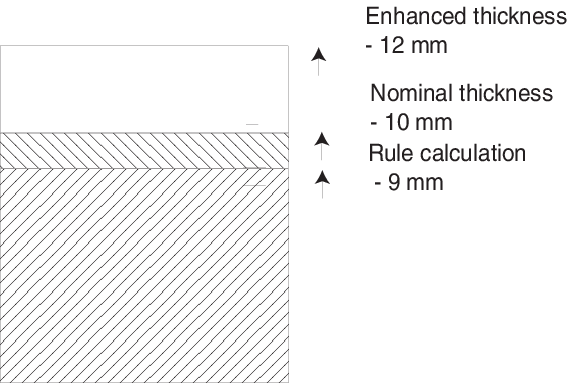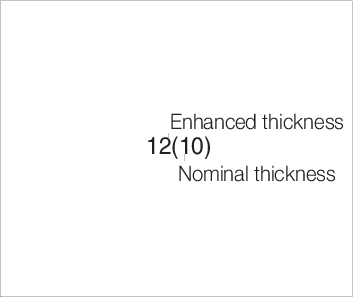1.2.2 In well-maintained
naval ships, it is unlikely that there will be overall plate diminution
without it being accompanied by a heavily pitted surface or breakdown
of coating. Therefore the TM requirements for the hull in accordance
with Vol 1, Pt 1, Ch 3 Periodical Survey Regulations of the Rules
for Naval Ships, may be partially waived (at the Surveyor’s
discretion) where it can be confirmed by random measurement and visual
inspection of the coated surface that there is no sign of any corrosion
having taken place. Care should be taken when performing a visual
inspection that the surface of the plate is being inspected, and that
only thin coatings are present. Lagging, lining, screed and cladding
material may need to be removed.
1.2.3 Note that
for existing ships being taken into Naval Class for the first time
thickness measurements are mandatory. The minimum extent of hull thickness
gauging is given in Vol 1, Pt 1, Ch 3 Periodical Survey Regulations of
the Rules for Naval Ships (to establish the thickness of plate fitted
at build). For ships built under special survey by a recognised Classification
Society or other on-site Owner’s or independent quality control
and inspection procedures, where the thickness of plate can be confidently
established, the extent of gauging may be reduced.

Figure 11.1.1 Material thickness

Figure 11.1.2 Plan notation
1.2.4 Particular
attention is drawn to the need for maintaining the buckling resistance
of longitudinals. Longitudinals must be renewed if there is any evidence
of buckling or if the diminution is below design values.